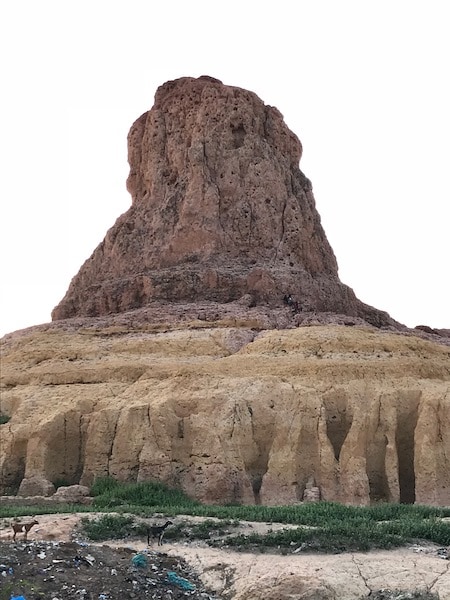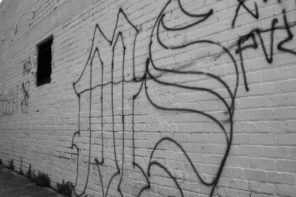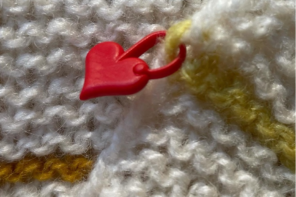In December 2017, Toungouma was stolen, the famed stone said to render justice in the Département of Dogondoutchi, Niger. When it was found a few days later, the stone—a plain rock considered by some as an iconic piece of Niger’s religious heritage and by others as a “live” object and the centrepiece of “animist” power—lay in shatters. The grandson of Baura, the Azna (local non-Muslim minority) priest entrusted with Toungouma’s care, was arrested for larceny after the remains of the stone were discovered in his house by the police. They had been led there by the motorcycle tire marks left on the sand by the thief. Meanwhile, the news of Toungouma’s theft spread across the region, causing consternation in some circles and mild relief in others.
In July of 2018, I met with Judge Mourtala in the town of Dogondoutchi, the administrative capital of the département bearing its name, after learning that the shattered remains of Toungouma, which by then constituted evidence in a criminal case, were in his possession. When I walked into his office, the judge unwrapped the cloth bundle sitting on his desk. Nested inside the white cloth were dozens of loose rock fragments of varying sizes. “What am I supposed to do with this?”, he blurted out, expecting no answer. His question nevertheless signalled that despite having been reduced to an unsightly pile of rubbish, Toungouma was not discardable. Waste, Francisco Martinez suggests, is the opposite of commitment. It entails disinvestment, disaffection. Messy and volatile as they were, the stone’s remains retained an eerie quality that was viscerally affective—akin perhaps to what Kathleen Millar, in her ethnography of garbage collectors, calls a “vital liminality.”
Messy and volatile as they were, the stone’s remains retained an eerie quality that was viscerally affective—akin perhaps to what Kathleen Millar, in her ethnography of garbage collectors, calls a “vital liminality.”
Legend has it that centuries ago, Toungouma led the first Sarauniya, the queen-priestess who fled the Hausa kingdom of Daura, to the village of Lougou, where she founded a dynasty. Lougou, situated some forty kilometres from Dogondoutchi, remains a seat of Azna religious power and is now a World Heritage Site. Every female lineage member who had succeeded the first Sarauniya had acted as the stone’s guardian. When a dispute arose between two parties, rather than turn to the “modern” justice system, the parties would travel to Lougou and request that Toungouma adjudicate on the matter. Here we begin to appreciate Toungouma as a “sensational form” that simultaneously governs a sensory engagement with spiritual power and conveys a sense of direct other-than-human presence. I never witnessed the procedure but the testimonies of those who did concur: the stone, no more than twelve inches in diameter, would arrive, carried in a net suspended from a yoke resting on the shoulders of two men. If a defendant was innocent, Toungouma would push its carriers away from him. If he was guilty, the stone would pull its carriers toward him. To avoid being crushed, he had no choice but to throw himself to the ground—a sure sign of guilt. The process was said to be infallible: Toungouma did not make mistakes.
The thief, whom I call Salifou, told the police he had not acted alone. It was, he claimed, the spirit of Toungouma himself who had told him to destroy the stone. Toungouma had become a source of ill-gotten gains. Whereas litigants once brought small gifts to Toungouma’s caretakers, they now had to hand over large sums of money before Baura and his acolytes agreed to take on their cases. Loath to be associated with such monetary pursuits, the spirit resolved to put an end to being used for adjudication in dispute resolutions. In reducing the stone to rubble, Salifou had only done Toungouma’s bidding.
Rumour had it that other individuals had previously tried to steal Toungouma. I heard of a man who carried the stone to his car, hoping to drive away with his loot. But the car refused to move, and he was forced to return the stone. Salifou maintained he had managed to cart off Toungouma (the stone) on his motorcycle and carry it home owing to the support he enjoyed from Toungouma (the sentient being). I follow Tim Ingold (2011: 68) in seeing Toungouma’s animacy as “not the result of an infusion of spirit into substance, or of agency into materiality,” but rather something that is “ontologically prior to their differentiation.” That they did not differentiate between Toungouma the spirit and Toungouma the stone created a “metaphysical imbroglio” for local authorities, to use Bruno Latour’s words. For one thing, should they treat the theft of Toungouma as an instance of heritage loss (in a conventional sense) or something more?
For some people, the destruction of Toungouma signalled the end of an era. A schoolteacher told me that “a page has been turned in the history of animism.” Already in the twentieth century, successive waves of Muslim religious reforms aiming to standardize Islamic practices had banned spirit-centred rituals and led to the destruction of spirit shrines. A landscape that once throbbed with invisible powers became an inert scenery against which human agency, with God’s assistance, could be deployed. People neglected spirits while trees and other features of the landscape became, to quote a villager, “things.” Yet Islamic iconoclasm did not erase the past. Today, people say, the spirits linger over the places they were banished from, frightening people, making trouble, and causing suffering. Their spectral presence undermines the pastness of the past, raising questions of commitment, debt, and accountability. I ask: Who should care for spirits? Insofar as spirits bear witness to previous epochs, serving as the bridge between the living and the dead—something Anand Taneja called “jinnealogy”—what form does inheritance take for those who remain haunted by the past? Is inheritance possible when people reject their debt to past generations?
I question the view that the stone’s destruction can be summed up as turning a historical page. Instead, borrowing from Ann Stoler’s understanding of the past as both “over” and pervasive, I try to “think with the multiple tenses” that Toungouma’s spectral presence invokes. Rather than focusing on the stone’s fragments as inert remains, as Muslim iconoclasts and “secular” actors do, I consider the histories they recruit and which unite disparate temporalities, topographies, and agencies. Dispensing with the discrete temporalities required by “page turning” means letting go, along with Dipesh Chakrabarty, of temporal models in which time unfolds in a sequential, teleological, irreversible fashion. Put differently, our understanding of heritage must make room for the ways in which the past is alive, infiltrating the present—and weighing on the future.
Our understanding of heritage must make room for the ways in which the past is alive, infiltrating the present—and weighing on the future.
When summoned by the authorities to verify the provenance of the rock fragments recovered from Salifou’s house, the guardians of Toungouma declared the rubble were not the remains of the famed stone. Not only were the fragments fake, but the real Toungouma was now hidden away in the bush, they insisted. Such claims align with the broader narrative that ties (Islamic) iconoclasm to a diminishment of knowledges and ecologies while framing the past as a haunting presence. Toungouma was now out of most people’s reach. Although Lougou’s residents claimed the stone would return, most people were not fooled.
At another level, by denying the theft of Toungouma, the stone’s guardians rejected the notion that the stone was part of the historical trend involving the vanishing of marginalized practices, suspended at the moment of impending disappearance. While ostensibly simplifying the judge’s task, they actually complicated it. Had a crime actually been committed? Was the pile of rubble evidence of this crime? More importantly, perhaps, what should be done with it, once the presumed thief had been sentenced? The reputation of Toungouma, known among educated Nigeriens as la pierre sacrée, had spread beyond Niger’s borders. Foreigners had met Toungouma, treating Azna theories, metaphysics, and ontologies with varying degrees of seriousness. As a fixture of the “animist” landscape, the stone had inspired journalistic, touristic, and anthropological accounts. Judge Mourtala was aware of this. He also knew the fragments could not be returned to their rightful guardians, who refused to recognize them as genuine. He now faced a quandary. Turning them over to a museum would draw unwanted attention to the incident and solidify the narrative promoted by educated elites of a waning “animist” tradition. The alternative—getting rid of the debris—was equally objectionable.
To complicate the case further, Salifou claimed that Toungouma (the spirit) could no longer arbitrate disputes in an Azna fashion because he had converted to Islam. By ordering Salifou to destroy the stone, the spirit performed an act of iconoclasm, severing his ties to Azna history and cosmology. But let us consider the act from the human agent’s perspective. By shattering the stone, Salifou rejected his own inheritance. That is, he refused to endorse the priestly mantle that, as Baura’s grandson, would one day be bequeathed to him, as well as the duties associated with it. In theory, individuals selected through an ordeal involving the dead priest’s corpse cannot escape their obligations for they are regarded as the custodians of a collective heritage. But since the 1980s, I have heard of Azna abdicating their responsibilities as members of priestly lineages. Salifou appeared to be one of these reluctant legatees, eager to follow an alternative path.
As descendants of the region’s first settlers, the Azna still claim (largely symbolic) ties to the land through their propitiation of spirits, but they constitute a precarious minority. Their role as ritual experts has been progressively eclipsed by other, mostly Muslim, religious specialists. The last few decades have witnessed the rise of a “reformist” Muslim movement, known colloquially as Izala, seeking to purify Islam of local accretions and re-moralize society. Today Izala and its offshoots denounce all engagements with spirits, even efforts to cast them off, as idolatry. Rather than following Izala, I suspect that Salifou embraced the message of Sufi preachers who describe spirits as evil creatures in the service of Satan. While Sufi religious leaders speak dismissively of Azna practices and other forms of spirit veneration, which they associate with jahilci, the ignorance of Islam, they are still committed to battling spirits, in some cases by converting them to Islam. By declaring that Toungouma had converted to Islam and wanted the stone destroyed, Salifou exemplified how Muslims claiming to fight the malevolence of “traditional” culture traffic heavily in its concepts and categories.
Salifou’s inheritance was burdensome—requiring commitment, dedication, sacrifice—and he wanted none of it. By smashing Toungouma into pieces, he depleted some of the power of the office held by his grandfather. Far from demonstrating that he was a “buffered subject,” who was “no longer open, vulnerable to a world of spirits and forces,” Salifou’s iconoclasm illustrated how in criticizing spirit devotees (including Azna, whom educated Nigeriens call les animistes), Sufis tend to adopt their ontologies and cast as supreme adversaries the more-than-human powers these ontologies posit. Put simply, if the stone’s destruction signalled a rupture with Azna traditions, it did not make space for a spiritless modernity.
Having pondered what Toungouma’s destruction exposes about the transmission of heritage in a place where the past, rather than being domesticated by the present, is experienced by some as a haunting presence, I return to the question Salifou’s words and deeds raise for me and which has relevance for the broader discussion of “heritage out of control.” Inheritance, for Jacques Derrida, is “never a given, it is always a task.” “There is no inheritance without a call to responsibility,” Derrida further notes. What shape does the past take when people refuse to assume their inheritance? Unlike educated Nigeriens who claim l’animisme as heritage—a past they are insulated from and which they safely consume as “culture”—Salifou sought to distance himself from Azna tradition. Yet his actions did not seal off the past. One might argue that while heritage serves to make the past legible, iconoclasm is a means of “silencing the past” by erasing its material traces. While he destroyed the stone, ostensibly mimicking “reformist” Muslims combatting idolatry, Salifou did not sever his ties with Toungouma, on the contrary. Here the stone’s remains, in their volatile materiality, help us grasp what became of Salifou’s heritage. As waste, they were not only “out of place” but also “out of time.” Rather than relegating Azna practices of adjudication to a repository of bygone traditions, Toungouma’s destruction threw into relief the indeterminacy of the past. Faced with a past that leaked into ordinary life, restraining action and shaping trajectories, Salifou could only defer the matter of his inheritance.
Featured image by the author.










